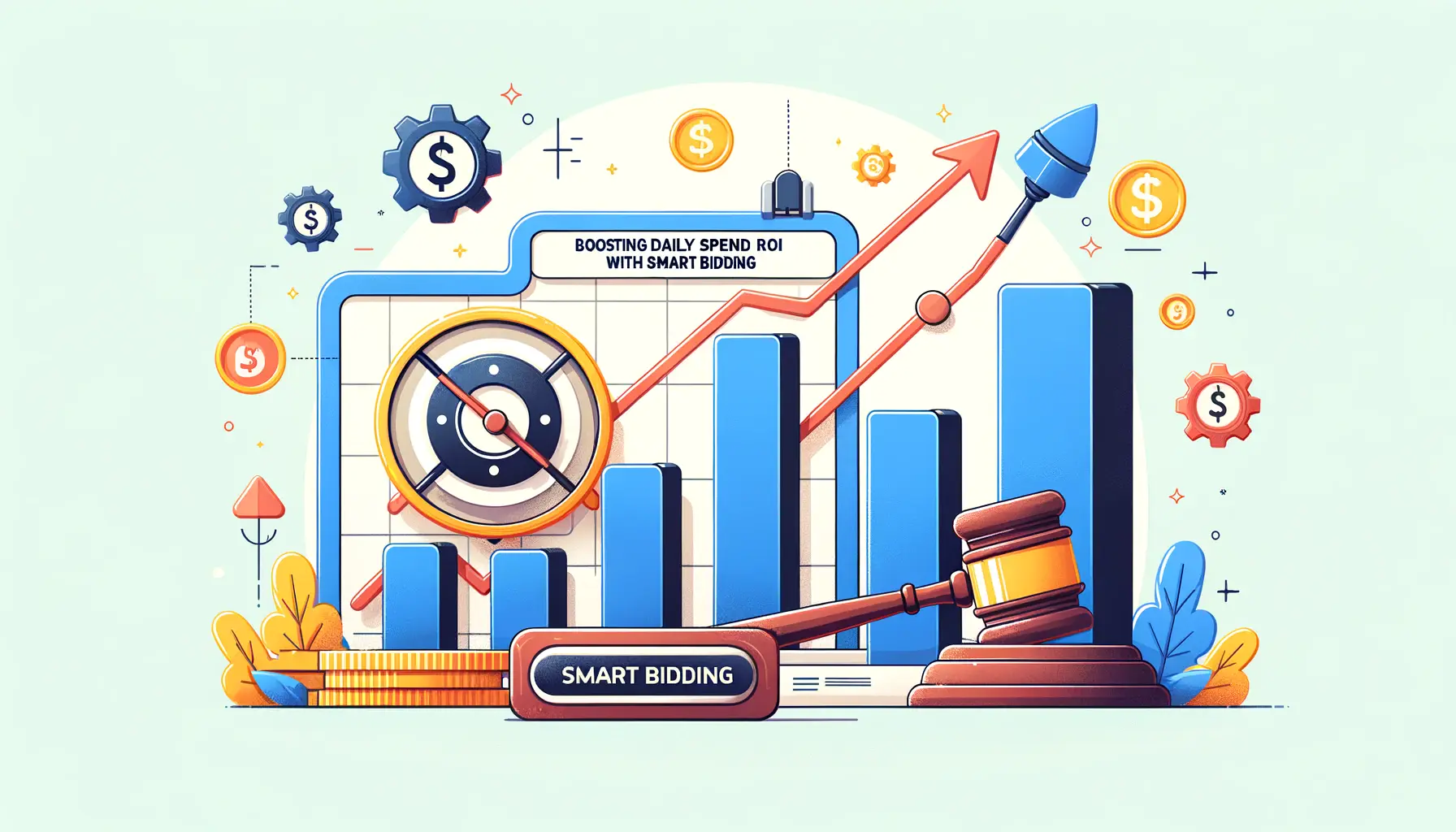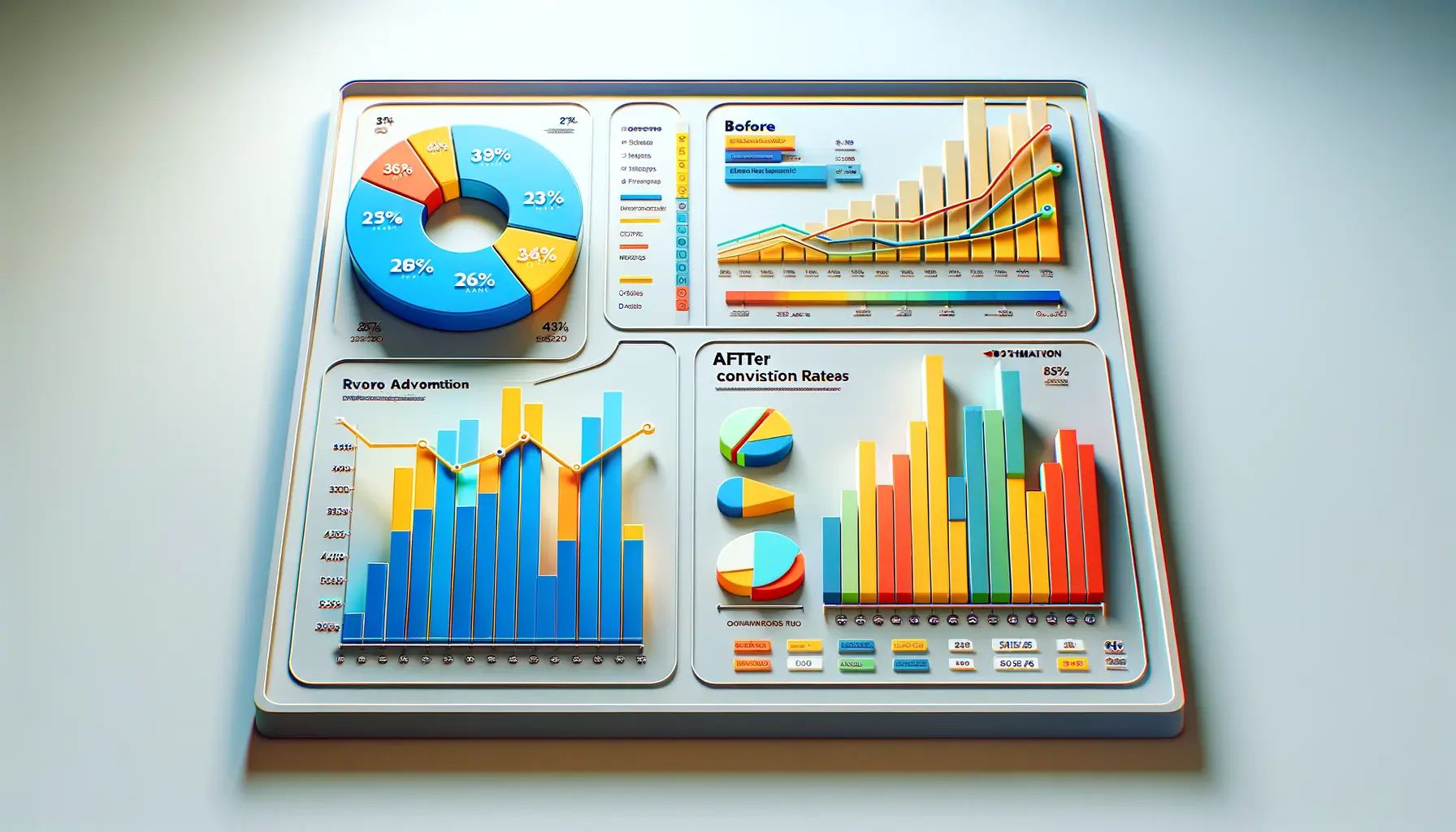As the digital landscape evolves, the efficiency of ad spend on platforms like Facebook has become a pivotal concern for businesses.
In an era where every dollar counts, understanding and implementing strategies to optimize Facebook ad spend is not just beneficial; it’s essential.
This article delves into the nuances of maximizing ad spend efficiency on Facebook, offering insights and strategies that are crucial for businesses aiming to achieve better returns on their investments.
Facebook, with its vast user base and sophisticated targeting capabilities, presents a unique opportunity for advertisers.
However, the challenge lies in navigating this complex platform to ensure that ad spend translates into tangible results.
This exploration into ad spend efficiency on Facebook is designed to guide marketers and businesses through the intricacies of Facebook advertising, ensuring that every ad dollar is spent wisely.
- Understanding the Facebook Advertising Landscape
- Strategic Audience Targeting and Segmentation
- Optimizing Budget Allocation and Bidding Strategies
- Leveraging Facebook’s Analytics and Reporting Tools
- Mastering Facebook’s Ad Delivery Optimization
- Advanced Techniques in Facebook Ad Targeting
- Integrating Facebook Ads with Overall Marketing Strategy
- Conclusion: Mastering Ad Spend Efficiency on Facebook
- FAQs on Ad Spend Efficiency in Facebook Advertising
Understanding the Facebook Advertising Landscape
The first step in enhancing ad spend efficiency on Facebook is to comprehend the platform’s advertising landscape.
Facebook offers a plethora of ad formats, targeting options, and measurement tools, each playing a critical role in the success of advertising campaigns.
From image and video ads to carousel and dynamic product ads, the variety of formats available allows for creative and engaging ways to reach potential customers.
Targeting on Facebook is equally diverse, enabling advertisers to reach audiences based on demographics, interests, behaviors, and even retargeting options.
This level of granularity in targeting ensures that ads are shown to the most relevant audience, increasing the likelihood of engagement and conversion.
Additionally, Facebook’s measurement tools provide valuable insights into ad performance, allowing for data-driven decisions to optimize campaigns continuously.
Maximizing Ad Formats and Creative Strategies
Choosing the right ad format and developing compelling creatives are crucial for ad efficiency.
Each ad format serves a different purpose and resonates differently with audiences.
For instance, video ads are highly engaging and ideal for storytelling, while carousel ads are perfect for showcasing multiple products or features.
The key is to align the ad format with the campaign’s objective and the target audience’s preferences.
Creativity in ad design and messaging cannot be overstated.
Ads that stand out in the crowded Facebook feed can significantly improve click-through rates and overall campaign performance.
This involves using high-quality images, engaging copy, and a clear call-to-action. Testing different creative variations is also vital to determine what resonates best with the audience.
Tip: To enhance ad spend efficiency on Facebook, focus on aligning ad formats with campaign objectives and invest in creative, high-quality ad designs that resonate with your target audience.
Strategic Audience Targeting and Segmentation
Effective audience targeting is a cornerstone of ad spend efficiency on Facebook.
It’s not just about reaching a large number of people, but about reaching the right people.
Facebook’s advanced targeting options allow advertisers to segment their audience in a highly specific manner, leading to more relevant and effective ad campaigns.
Understanding the audience’s demographics, interests, and behaviors is key to creating targeted campaigns.
This involves a deep dive into audience analytics to identify patterns and preferences.
By doing so, advertisers can tailor their messages to resonate with specific segments, increasing engagement and conversion rates.
Key Strategies for Audience Targeting
- Demographic Targeting: Focus on age, gender, location, and other demographic factors to reach your ideal customer profile.
- Interest-Based Targeting: Leverage Facebook’s data on user interests, such as hobbies, favorite entertainment, and shopping preferences, to create highly relevant ads.
- Behavioral Targeting: Utilize insights on consumer behaviors, including purchase history and device usage, to tailor your advertising approach.
- Lookalike Audiences: Expand your reach by targeting new users who share characteristics with your existing customers.
- Retargeting Campaigns: Re-engage users who have previously interacted with your brand, whether through website visits, app usage, or past purchases.
Segmentation allows for more personalized and effective advertising.
By dividing your audience into smaller, more focused groups, you can create ads that are specifically designed for each segment.
This not only improves engagement rates but also ensures a better allocation of your ad budget towards those segments that are more likely to convert.
Note: Regularly review and adjust your audience targeting strategies based on campaign performance data to continuously improve ad spend efficiency.
Optimizing Budget Allocation and Bidding Strategies
Allocating your budget effectively and understanding Facebook’s bidding system are critical for maximizing ad spend efficiency.
The way you allocate your budget and choose your bid strategy can significantly impact the performance of your campaigns.
Budget Allocation Techniques
- Test and Learn: Start with a smaller budget to test different ad sets and identify the most effective ones.
- Focus on High-Performing Campaigns: Allocate more budget to campaigns that show promising results and higher ROI.
- Seasonal Adjustments:Increase or decrease your budget based on seasonal trends and periods of high engagement relevant to your industry.
- Diversification: Spread your budget across various campaigns and ad sets to mitigate risk and explore different audience segments.
Understanding Bidding Strategies
Bidding is an essential aspect of Facebook advertising.
It determines how your ads are placed and how much you pay for user engagement.
Understanding and selecting the right bidding strategy can lead to more cost-effective ad placements.
- Lowest Cost Bidding: This strategy focuses on getting the most results for your budget, ideal for maximizing reach.
- Cost Cap Bidding: Set a maximum cost per action to control spending and ensure predictable costs.
- Value Optimization:Focus on bidding for users who are likely to bring higher value or conversions, optimizing for long-term profitability.
- Manual Bidding:Take full control by setting your bid amounts, useful for experienced advertisers with specific cost goals.
Choosing the right bidding strategy depends on your campaign goals, budget constraints, and level of experience with Facebook ads.
It’s important to continuously monitor and adjust yourbidding approach based on the performance data to ensure optimal use of your ad spend.
Idea: Experiment with different bidding strategies to find the optimal balance between cost efficiency and campaign performance.
Leveraging Facebook’s Analytics and Reporting Tools
Utilizing Facebook’s analytics and reporting tools is vital for enhancing ad spend efficiency.
These tools provide insights into campaign performance, audience behavior, and ad engagement, enabling advertisers to make informed decisions and optimize their strategies.
Key Metrics to Monitor
- Click-Through Rate (CTR): Measures the effectiveness of your ad in generating clicks.
- Conversion Rate: Indicates the percentage of ad interactions that result in conversions.
- Cost Per Click (CPC) and Cost Per Action (CPA): Helps in understanding the cost-effectiveness of your ads.
- Return on Ad Spend (ROAS): Calculates the revenue generated for every dollar spent on ads.
- Audience Insights: Provides detailed information about your audience’s demographics, interests, and behaviors.
Regularly analyzing these metrics allows advertisers to gauge the performance of their campaigns and identify areas for improvement.
By understanding what works and what doesn’t, you can refine your ad targeting, creative elements, and overall strategy to improve efficiency.
Utilizing Reporting Tools for Strategic Decisions
Facebook’s reporting tools offer a comprehensive view of campaign performance.
Advertisers can customize reports to focus on specific metrics that align with their business goals.
These tools also allow for the comparison of different ad sets and campaigns, providing a clear picture of what strategies are yielding the best results.
Effective use of reporting tools involves:
- Setting up custom dashboards for quick access to key metrics.
- Using data to identify trends and patterns in ad performance.
- Applying insights from reports to optimize ongoing and future campaigns.
Featured Info: Regular use of Facebook’s analytics and reporting tools is essential for continuous improvement and maximization of ad spend efficiency.
Mastering Facebook’s Ad Delivery Optimization
Optimizing ad delivery on Facebook is a crucial step inenhancing ad spend efficiency.
This involves understanding how Facebook delivers ads to users and adjusting your settings to ensure your ads reach the most relevant audience in the most cost-effective way.
Optimization for Ad Delivery
- Choosing the Right Objective: Select an ad objective that aligns with your campaign goals, whether it’s brand awareness, traffic, engagement, or conversions.
- Placement Optimization: Utilize Facebook’s automatic placements to maximize ad visibility across different platforms, or select specific placements for targeted reach.
- Ad Scheduling: Schedule your ads to run during times when your target audience is most active, optimizing for better engagement.
By fine-tuning these aspects of ad delivery, you can significantly improve the reach and effectiveness of your campaigns.
This not only helps in reducing wasted ad spend but also increases the chances of achieving your desired outcomes.
Ad Frequency and Relevance
Managing ad frequency ensures your audience does not experience ad fatigue.
This involves balancing how often your ads are shown to the same user.
A higher frequency might annoy users, while a lower frequency might not be effective enough.
Additionally, maintaining high ad relevance scores indicates that your ads are well-received and engaging to your audience, which can lead to lower costs and better performance.
- Monitoring Ad Frequency: Keep an eye on how often your ads are shown to the same user and adjust accordingly.
- Improving Ad Relevance: Create engaging and relevant ads that resonate with your target audience to maintain high relevance scores.
Truth: Effective optimization of Facebook ad delivery can lead to higher engagement rates, better campaign performance, and more efficient use of ad spend.
Advanced Techniques in Facebook Ad Targeting
To truly enhance ad spend efficiency on Facebook, it’s essential to delve into more advanced targeting techniques.
These methods allow for a more precise reach and can significantly improve the performance of your campaigns.
Custom and Lookalike Audiences
- Custom Audiences: Target users who have previously interacted with your brand, whether through your website, app, or Facebook page. This approach is highly effective for retargeting and re-engaging with interested users.
- Lookalike Audiences: Reach new users who share similar characteristics with your existing customers. This is ideal for expanding your reach while maintaining relevance.
These advanced targeting options enable you to connect with audiences that are more likely to be interested in your products or services, leading to higher conversion rates and better ROI.
Geo-Targeting and Behavioral Targeting
- Geo-Targeting: Tailor your ads based on users’ geographic locations. This is particularly useful for local businesses or campaigns targeting specific regions.
- Behavioral Targeting: Utilize data on users’ online behaviors, such as purchase history and website activity, to create highly targeted ads.
By leveraging these sophisticated targeting techniques, you can ensure that your ad spend is directed towards the most relevant and responsive audiences.
Idea: Experiment with a combination of custom, lookalike, geo-targeting, and behavioral targeting to discover the most effective strategy for your specific audience and campaign goals.
Integrating Facebook Ads with Overall Marketing Strategy
For maximum ad spend efficiency, Facebook advertising shouldnot be viewed in isolation but as an integral part of your overall marketing strategy.
This holistic approach ensures that your Facebook ads complement and enhance your other marketing efforts.
Aligning with Marketing Objectives
- Consistent Brand Messaging: Ensure that your Facebook ads align with your brand’s overall messaging and values. Consistency across platforms strengthens brand recognition and trust.
- Integrated Campaigns: Coordinate your Facebook ads with other marketing channels, such as email marketing, content marketing, and offline campaigns, for a unified marketing approach.
Integrating Facebook ads into your broader marketing strategy helps in creating a cohesive user experience and amplifies the impact of your marketing efforts.
Leveraging Cross-Channel Insights
Utilize insights and data from your Facebook campaigns to inform strategies on other marketing channels.
The learnings from Facebook’s detailed analytics can provide valuable information about customer preferences and behaviors that are applicable across various marketing initiatives.
- Data-Driven Decisions: Apply the insights gained from Facebook ad performance to refine your overall marketing strategy.
- Customer Journey Mapping: Use Facebook’s user engagement data to understand different stages of the customer journey and tailor your marketing efforts accordingly.
By integrating Facebook ads into your overall marketing strategy and leveraging cross-channel insights, you can create more targeted, effective, and cohesive marketing campaigns that drive better results and higher ROI.
Featured Info: An integrated marketing approach, combining Facebook ads with other marketing channels, leads to a more comprehensive and effective marketing strategy.
Conclusion: Mastering Ad Spend Efficiency on Facebook
In the dynamic world of digital marketing, mastering ad spend efficiency on Facebook is not just a competitive advantage but a necessity.
The strategies and insights discussed in this article provide a comprehensive roadmap for businesses and marketers aiming to optimize their Facebook advertising efforts.
By understanding the nuances of Facebook’s advertising platform and integrating these strategies into your marketing mix, you can achieve a more impactful and cost-effective advertising presence.
Key Takeaways for Enhanced Ad Efficiency
- Utilizing diverse ad formats and creative strategies to capture audience attention.
- Implementing strategic audience targeting and segmentation for more relevant ad delivery.
- Optimizing budget allocation and bidding strategies to maximize ROI.
- Leveraging Facebook’s analytics and reporting tools for data-driven decision-making.
- Mastering ad delivery optimization to reach the right audience at the right time.
- Exploring advanced targeting techniques like custom and lookalike audiences for precise targeting.
- Integrating Facebook ads into the broader marketing strategy for cohesive brand messaging.
As we navigate the complexities of Facebook advertising, it’s clear that ad spend efficiency is not just about reducing costs but about maximizing the value and impact of every ad dollar spent.
The journey towards efficient Facebook ad spending is ongoing, requiring continuous learning, testing, and adaptation.
By embracing these strategies, businesses can not only enhance their ad spend efficiency but also forge stronger connections with their audience, leading to sustained growth and success in the digital arena.
Remember, the key to ad spend efficiency on Facebook lies in a deep understanding of the platform, a strategic approach to targeting and optimization, and the integration of these ads into your overall marketing strategy.
With these elements in place, you’re well-equipped to navigate the ever-evolving landscape of Facebook advertising and achieve remarkable results.
Enjoyed the article? Let its author handle your social media ads. Visit our service page to get started!
FAQs on Ad Spend Efficiency in Facebook Advertising
Explore these frequently asked questions to gain deeper insights into optimizing your ad spend on Facebook.
No, for ad sets or campaigns running less than a day, a lifetime budget is more appropriate.
If your ad underperforms, Facebook charges based on actual spend, not the maximum budget set.
Ad performance is influenced by duration, budget, and user engagement metrics like clicks.
It’s a budgeting feature that distributes funds in real-time to the most effective ad sets.
This feature may allocate more budget to ad sets yielding efficient short-term results.
It’s an automatic management tool for distributing campaign budget across ad sets for optimal results.
Consider your advertising goals and allocate a budget that aligns with your overall marketing strategy.
A monthly budget of $500 to $1,000 is often reasonable for small businesses or new advertisers.










